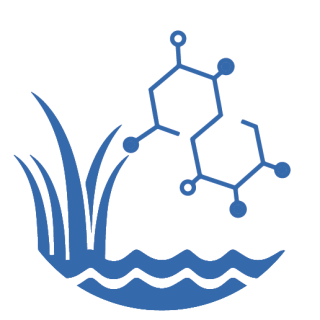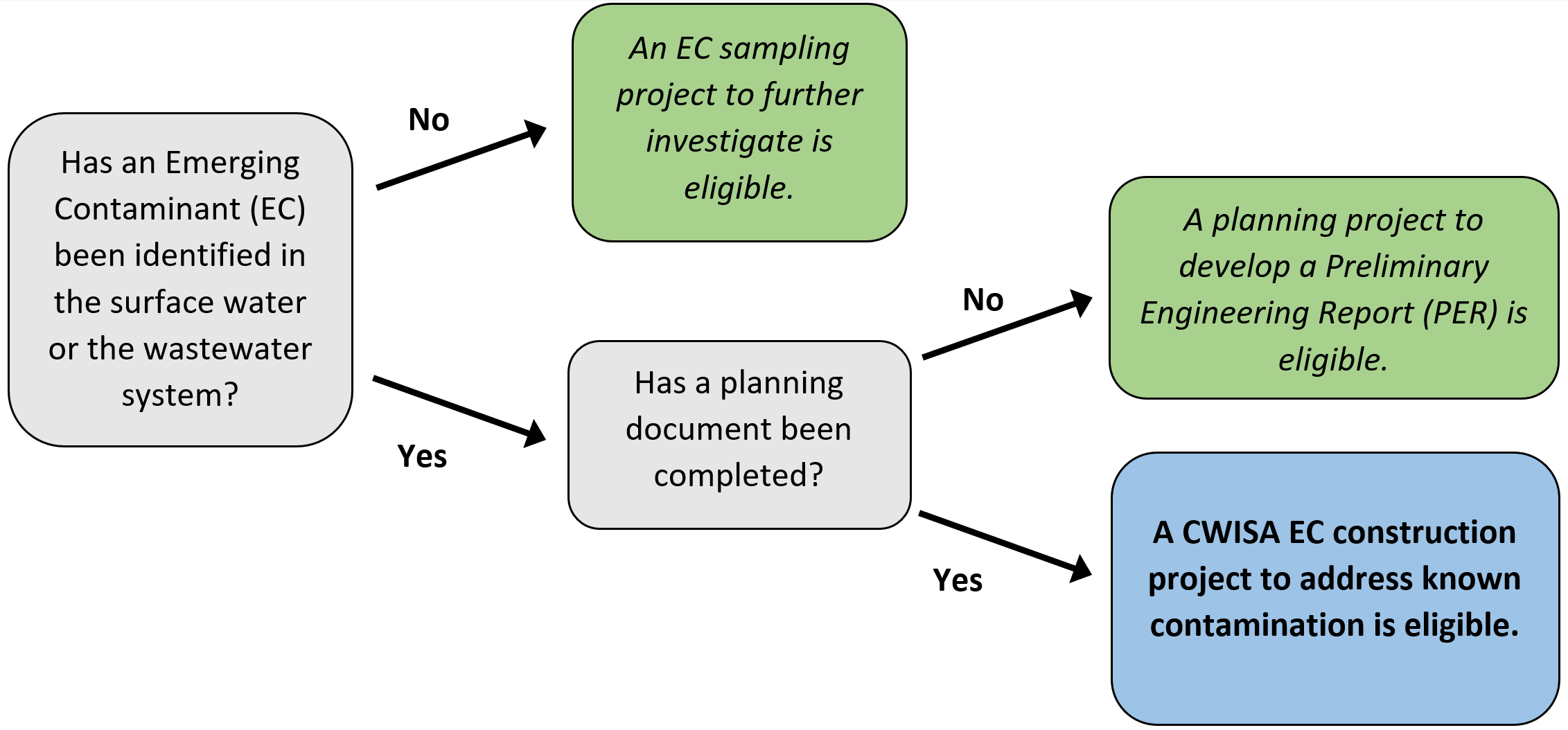Clean Water Indian Set-Aside Emerging Contaminant Program

- Purpose
- Examples of Eligible Activities
- Eligibility Requirements
- Funding
- To Be Considered for Funding
- Project Funding Timeline
- Questions?
- Documents
Purpose
To assist federally recognized Tribes within EPA Region 9 (CA, NV, AZ, and the Navajo Nation) improve their wastewater infrastructure to address emerging contaminants (ECs).
Examples of Eligible Activities
Project types that are eligible under section 603(c) of the Clean Water Act and address emerging contaminants are eligible under this appropriation. Note that Clean Water Indian Set-Aside (CWISA) EC funds do not apply to the Clean Water State Revolving Fund, per Clean Water Act Section 518. This is particularly relevant for monitoring, planning, and design as described in the project types below.
- Project assessment monitoring: monitoring ECs for the purpose of field testing an innovative or alternative technology.
- Planning and design: identification of ECs and supporting preliminary engineering activities that may lead to well-scoped and ready-to-fund projects (e.g., Preliminary Engineering Report (PER) development).
- Potable and non-potable water reuse: water reuse or reclamation projects that might use advanced treatment (e.g., reverse osmosis, granulated activated carbon, or ion exchange) to remove PFAS or other ECs.
- Wastewater treatment facilities: pilot or demonstration projects to evaluate the efficacy of a particular wastewater treatment technology for ECs.
- Biosolids: sampling of biosolids with ECs to assess type of treatment needed, or the design and construction of facilities for biosolids handling and disposal.
- Stormwater, surface water protection, and landfill projects that address ECs.
EPA recognizes that information about the presence and extent of ECs might be limited for Tribal wastewater utilities and the Indian Health Service (IHS) Sanitation Deficiency System (SDS) prioritization system has not previously focused on ECs in wastewater. Therefore, proposed projects are not required to be identified in the IHS SDS database.
Eligibility Requirements
Only federally recognized Tribes within EPA Region 9 may submit project proposals for Region 9’s CWISA EC Program funding.
Proposed projects must address an emerging contaminant. Emerging contaminants refer to substances and microorganisms, including manufactured or naturally occurring physical, chemical, biological, radiological, or nuclear materials, which are known or anticipated in the environment, that may pose newly identified or re-emerging risks to human health, aquatic life, or the environment. These substances, microorganisms, or materials can include many different types of natural or manufactured chemicals and substances – such as those in some compounds of personal care products, pharmaceuticals, industrial chemicals, pesticides, and microplastics. A description of ECs for the purposes of CWISA financing can be found in Appendix B of EPA’s March 2022 Memorandum Implementation of the Clean Water and Drinking Water State Revolving Fund Provisions of the Infrastructure Investment and Jobs Act SRF (IIJA).
Contaminants with national recommended water quality criteria established by the EPA under CWA section 304(a), except for PFAS, are not considered ECs. This includes nutrients (e.g., ammonia, nitrogen, and phosphorus), certain organics, and certain metals. Therefore, nutrients (e.g., ammonia, nitrogen, and phosphorus), certain organics, and certain metals are not considered emerging contaminants.
Funding
A total of $6.8 million will be available through FY26 to support eligible projects in Region 9 that address emerging contaminants in wastewater. Region 9 expects that there will be sufficient funding for eligible projects to investigate and plan for addressing CWISA EC. Region 9 plans to fund construction projects through the base CWISA Program, if sufficient CWISA EC funds are not available. If a CWISA EC construction project is fully scoped, planned, and ready for construction, Region 9 will consider that project for funding. Matching funds are not required.
Funds will be awarded through the following mechanisms:
- Direct grant to the Tribe.
- Interagency Agreement (IA) with IHS.
- EPA-directed in-kind assistance (i.e., contractors) to Tribes.
To Be Considered for Funding
Project proposals will be accepted throughout the year on a rolling basis and will be evaluated as they are received.
All project proposals must include the following:
- Project Proposal Form;
- Tribal government endorsement; and
- For construction projects: Preliminary Engineering Report (PER) and/or supporting documentation.
E-mail one electronic copy of the proposal and any documentation to: Nancy Sockabasin (sockabasin.nancy@epa.gov).
Electronic files exceeding 8MB must be separated into emails not exceeding 8MB each. If you have difficulty submitting electronic documentation, contact Nancy Sockabasin.
Funding Methodology Flowchart
Project Funding Timeline
Below is an outline of EPA’s anticipated funding timeline from receipt of project proposal to award date. Proposals will be accepted on a rolling basis throughout the year and the timing of funding awards will be dependent upon when EPA receives the project proposal, and when the Tribe responds to EPA comments. Information requested in the initial proposals will include:
- the EPA Region 9 CWISA EC Project Proposal Form (pdf) (1.37 MB, April 11, 2024) Project Proposal Form
- Tribal government endorsement, and
- a cost estimate. A PER is required for construction projects.
Proposals are accepted throughout the year and will be evaluated upon receipt. Due to the volume of actions processed near the end of the fiscal year, EPA award delays may occur for proposals received in July through September.
Expected Project Award Timeline
Proposal Submission Steps
- Step 1: Tribe Submits Proposal
- Estimated Timeframe: 2 months
- EPA Actions: EPA will review proposals for completeness and notify each applicant with requests for additional information.
- Step 2: Tribe Responds to EPA Comments
- Estimated Timeframe: 1 month
- EPA Actions: EPA reviews final submissions and notifies the Tribe of funding decision, along with guidance letters for projects to be funded through grants.
- Step 3: Tribe submits final documents for Grant, Interagency Agreement, or In-Kind Services
- Estimated Timeframe: 3 months
- EPA Actions: EPA processes and awards funds for projects.
Based on the actions and estimated timeframes above, it may take approximately 6 months after the initial project proposal is submitted to EPA to receive funding.
Documents
Free viewers and readers are available to access documents on our website. If you encounter issues with assistive technology, please contact us.
-
EPA Region 9 Clean Water Indian Set-Aside Emerging Contaminant Program Funding Guidance (pdf)
(409.17 KB, September 2025)
EPA Region 9 Clean Water Indian Set-Aside (CWISA) Emerging Contaminant (EC) Program 2025 Guidelines and Procedures for Funding Assistance. -
EPA Region 9 CWISA EC Project Proposal Form (pdf)
(1.37 MB, April 11, 2024)
EPA Region 9 Clean Water Indian Set-Aside (CWISA) Emerging Contaminant (EC) Project Proposal Form. -
EPA Region 9 Fact Sheet: Available Funding to Support Wastewater Infrastructure Addressing Emerging Contaminants (pdf)
(234.82 KB, September 2025)
This fact sheet describes the available funding and in-kind services for federally recognized Tribes within EPA Region 9 to address emerging contaminants (ECs) in wastewater under the Infrastructure Investment and Jobs Act (IIJA).
Related Resources
- Drinking Water Tribal Set-Aside (DWTSA) Program
- Drinking Water Emerging Contaminant Programs
- Clean Water Indian Set-Aside Emerging Contaminant Program
- PFAS Tribal Drinking Water Sampling Project
- Lead Service Line Replacement Program
- Testing for Lead in Drinking Water at Tribal Schools Project
- Tribal Engagement Opportunities for National and Regional Water Actions (pdf) (248.63 KB, January 2026)
Questions?
Nancy Sockabasin
sockabasin.nancy@epa.gov
(415) 972-3772
To discuss a specific wastewater infrastructure project, please contact your Infrastructure Project Officer. Geographic assignments are aligned with Indian Health Service Area and District Offices within Region 9.
Escondido District and Clovis Field Office
Madeleine Tango
tango.madeleine@epa.gov
(619) 874-0568
Western Arizona District and Sacramento and Ukiah Field Offices
Sara McGillewie
mcgillewie.sara@epa.gov
(213) 244-1859
Eastern Arizona District and Redding District
Emma Young, Project Officer
young.emma@epa.gov
(415) 972-3707
Reno District
Katie Velazquez
velazquez.katie@epa.gov
(213) 244-1834
Tucson Area
Nancy Sockabasin
sockabasin.nancy@epa.gov
(415) 972-3772
Navajo Nation Area
Adam Ramos
ramos.adam@epa.gov
(415) 972-3450

